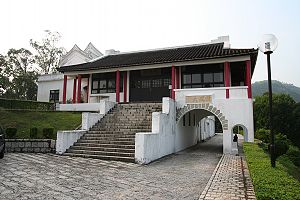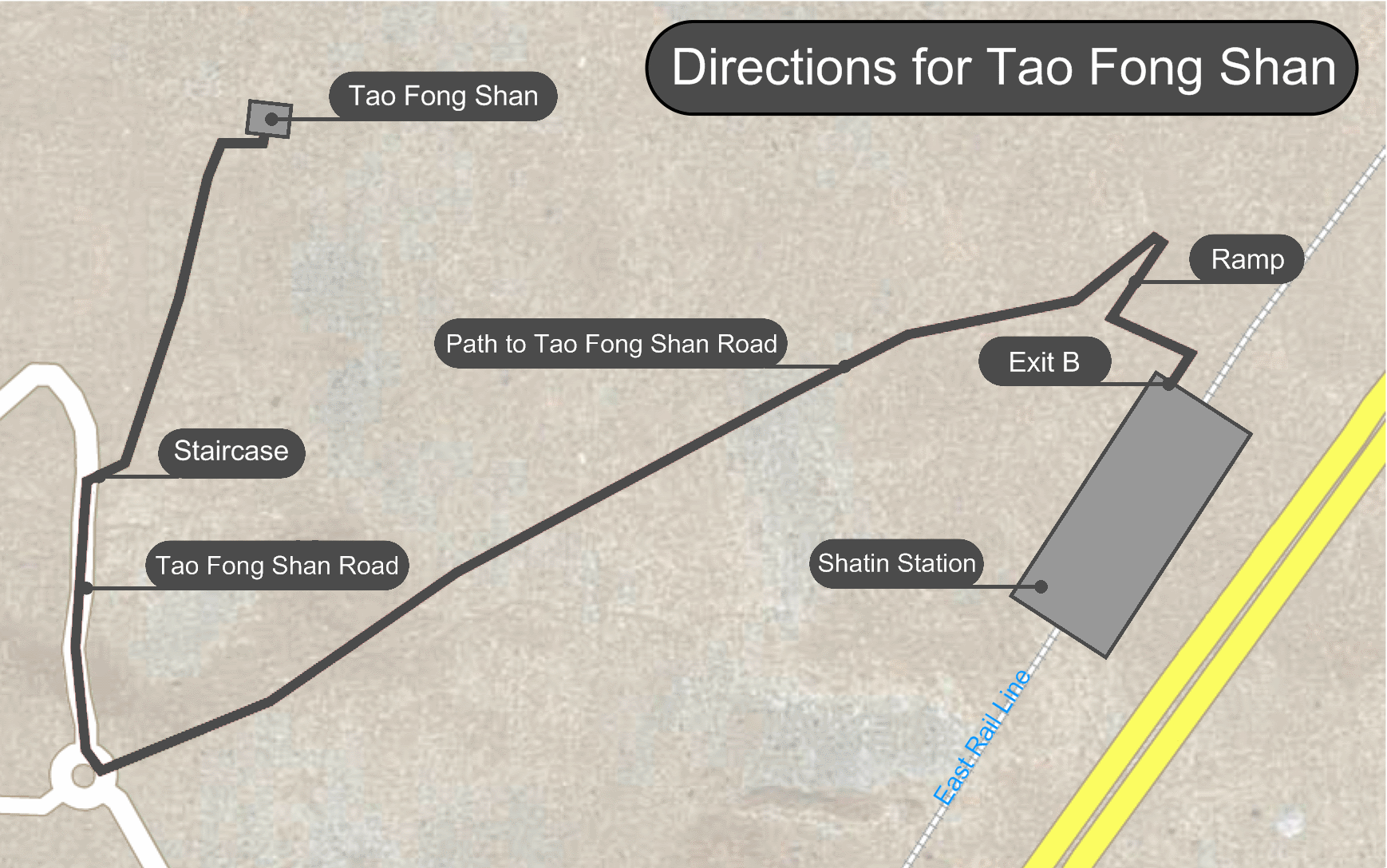
Tao Fung Shan
Encyclopedia

Tao Fong Shan is a hill less than 500 m tall located in Sha Tin
Sha Tin
Sha Tin, also spelled Shatin, is an area around the Shing Mun River in the New Territories of Hong Kong. Administratively, it is part of the Sha Tin District.-Geography:...
in Hong Kong
Hong Kong
Hong Kong is one of two Special Administrative Regions of the People's Republic of China , the other being Macau. A city-state situated on China's south coast and enclosed by the Pearl River Delta and South China Sea, it is renowned for its expansive skyline and deep natural harbour...
's New Territories
New Territories
New Territories is one of the three main regions of Hong Kong, alongside Hong Kong Island and the Kowloon Peninsula. It makes up 86.2% of Hong Kong's territory. Historically, it is the region described in The Convention for the Extension of Hong Kong Territory...
. Alternate romanizations of the name include "To Fung Shan" and "Tao Feng Shan".
Tao Fong Shan Christian Centre/Service Unit
The Tao Fong Shan Christian Centre (Chinese:Chinese language
The Chinese language is a language or language family consisting of varieties which are mutually intelligible to varying degrees. Originally the indigenous languages spoken by the Han Chinese in China, it forms one of the branches of Sino-Tibetan family of languages...
道風山基督教叢林) is situated at the Tao Fong Shan, Sha Tin, in Hong Kong. The centre was founded in 1930 by the Norwegian missionary Karl Ludvig Reichelt
Karl Ludvig Reichelt
Karl Ludvig Reichelt was a Lutheran missionary who worked China, especially among the Buddhists and established the Nordic Christian Buddhist Mission...
(1877–1952). Reichelt was sent to Hunan province in China in 1904. There he gradually developed an idea to share the gospel with Buddhists. In 1929, he established Jing Fong Shan in Nanjing. In 1930, due to the chaos of the Chinese civil war, Reichelt moved his work to Sha Tin, Hong Kong, and asked a Danish architect, Johannes Prip-Moller to design the buildings. Reichelt died on 13 March 1952 and was buried at the Tao Fong Shan cemetery. The buildings at the Centre are classified as Grade II historical building. The Centre is open from 9:00 am to 5:00 pm daily.
Facilities
The Centre includes a chapel, a library and a shop selling hand-painted porcelain and handicrafts.- The chapel (aka the Christ Temple) is an octagonal structure; Sunday Worship is available in the building.
- Pilgrim's Hall is a guest house patterned after the "Cloud and Water Halls" as seen at Buddhist sites in mainland China; retreats is available in Pilgrim's Hall.
- The Conference Hall is a traditional Chinese-style hall; it is designed for conferences and seminars, with a seating capacity for 60 persons.
- A 12-metre-high cross, facing Sha Tin, is the hallmark of the Centre. The cross is a popular among visitors and is a place for outside gatherings and meetings.
Transportation

For guests and visitors, the most common type of transportation is the taxi, which is only HK$25 if taken from Tai Wai. In addition, Tao Fong Shan Service Unit also operates a shuttle bus just for staff and visitors to its centre a few times daily from Sha Tin.

